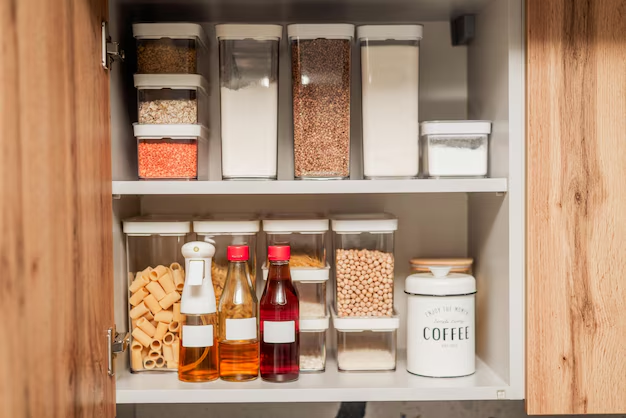Master the Art of Refrigerator Storage: A Comprehensive Guide
The refrigerator is the steadfast guardian of freshness in every kitchen, yet many still overlook its potential. Proper storage inside your fridge can significantly extend the life of your groceries, minimize waste, and ensure safety from foodborne illnesses. Today, we’ll dive into how you should store items in the refrigerator, offering practical tips from organization to the science behind those temperatures.
Understanding Your Refrigerator’s Layout
🌡️ Temperature Zones: Not All Shelves Are Created Equal
Top Shelves: These are the warmest part of the fridge. Ideal for items that don’t require a very cold environment, such as leftovers, ready-to-eat foods, or drinks.
Middle Shelves: Perfect for items like dairy (milk, cheese, yogurt) as they appreciate a consistent, moderate temperature.
Bottom Shelves: The coldest part of the fridge, closest to the freezing unit. Ideal for storing raw meat, poultry, and seafood to prevent cross-contamination and keep them fresh longer.
Crisper Drawers: These maintain a higher humidity level, suitable for storing fruits and vegetables. Often, drawers can be adjusted for humidity based on what they store.
Fridge Door: The door is the most exposed to temperature fluctuations, thus best for items with natural preservatives like condiments, or beverages.
Organizing for Optimal Freshness
🗃️ Smart Organization Strategies
Keep Like Items Together: Group similar foods together to make it easier to find what you need and prevent waste.
Label and Date: Clearly label leftovers with dates to keep track of their freshness and to ensure they’re consumed in a timely manner.
First In, First Out (FIFO): Always rotate newer groceries to the back, utilizing older items first to minimize spoilage.
🚫 Avoid Overcrowding
Overloading your refrigerator not only hinders cool air circulation but also accelerates spoilage. Use a consistent system to keep the fridge manageable, and consider organizing it during your weekly cleaning routine.
The Science Behind Refrigeration
🥶 How Cold Does It Need to Be?
The ideal refrigerator temperature is at or below 40°F (about 4°C). Beyond this range, bacteria can multiply rapidly, increasing the risk of foodborne illnesses. Use a thermometer to ensure the accuracy of your fridge’s internal temperature, adjusting as necessary.
🥗 Moisture Matters
Different foods require different humidity levels:
- High-Humidity Drawer: Best for vegetables like leafy greens, which thrive in hydration.
- Low-Humidity Drawer: Suited to fruits that might spoil faster in high humidity, like apples and berries.
Storing Specific Items Efficiently
🥛 Dairy: Keep It Fresh and Flavorful
Dairy should be stored in the middle shelves where the temperature is constant. Remember to seal cheese tightly to prevent it from absorbing odor or texture changes.
🍗 Meat and Seafood: Safety First
Store meat and seafood on the bottom shelf to avoid contamination. For added safety, use a shallow tray to catch any potential leaks.
🌿 Vegetables and Fruits: The Crisper Mystery
Separate ethylene-producing fruits like apples from ethylene-sensitive vegetables like spinach. This segregation prevents premature ripening and spoilage.
Adhering to Shelf Life Guidelines
📅 Expiration Dates: Not Just a Suggestion
Always pay attention to expiration dates, but also rely on sensory checks—visual appearance, smell, and texture can give clues about an item’s freshness.
Pro tip: Use or freeze refrigerated meats within a couple of days of purchase for optimal safety and taste.
Quick Tips for Efficient Refrigerator Use
Here’s a quick visual summary to keep your refrigerator in top shape:
- 🥤 Drinks: Keep on the door to maximize shelf space.
- 🍕 Leftovers: Label and store on the top shelves.
- 🍞 Bread: Store on the counter or freezing for longer durations.
- 🍦 Do Not Store in Fridge: Coffee, onions, potatoes—these should be left at room temperature for quality retention.
Developing Consistent Habits
An organized fridge not only saves time and money but also encourages healthier eating habits by making fresh foods more accessible. By adopting the routines outlined above, you transform a cluttered fridge into a gallery of fresh, nutritious options that inspire your cooking endeavors.
Remember that maintaining organization is not a one-time effort but an ongoing practice of habits that feed into one another, ensuring food safety and minimizing waste.
📝 Key Takeaway: By regularly revisiting these tips and understanding your refrigerator’s layout, you can keep your groceries fresher longer, reduce waste, and contribute to food safety.
Embark on this journey of storage mastery, and transform how you view and use your fridge in your culinary adventures!
